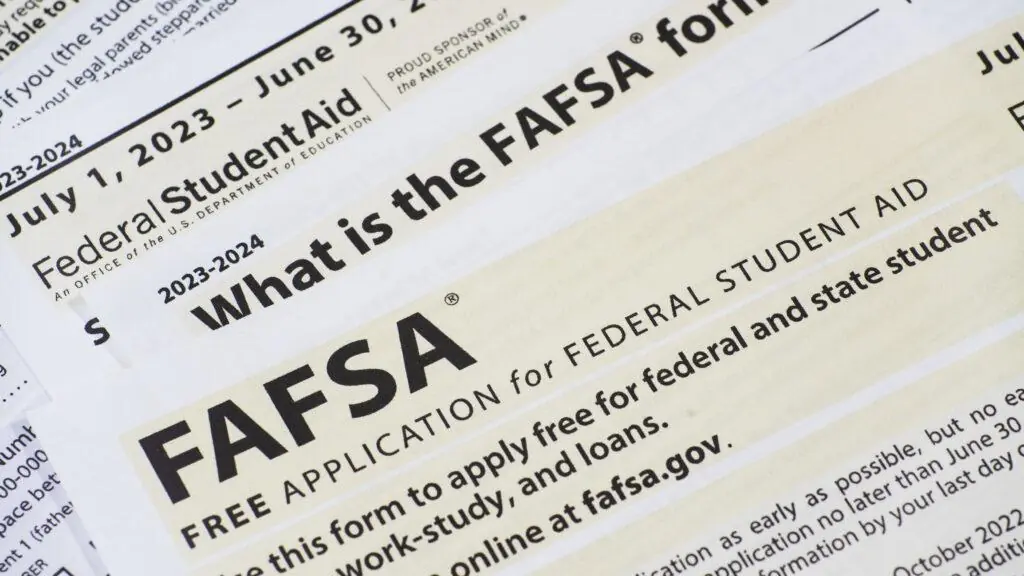Applying for college can feel overwhelming. When do you reach out to people for letters of recommendation? At what point do you start working on essays? When should you be considering a pre-college program? When there’s so much to do, it’s tough to know where to begin.
If you’re feeling unsure of what steps you need to take, here’s a complete breakdown of the college application timeline for high schoolers. From getting off to the right start in freshman year to college visits in junior year to all the forms due during senior year, here’s what you need to ensure you’re staying on track to get into your dream college:
How to Prepare for College in Your Freshman Year of High School
High school is a major transition on its own, so you shouldn’t be worrying too much about college at this point. Instead, focus on familiarizing yourself with your new environment, making friends, doing well in your classes and trying different extracurricular activities. Big decisions about college can wait.
How to Prepare for College in Your Sophomore Year of High School
Sophomore year is similar to freshman year, in that there’s not much you need to do to prepare for college other than signing up for extracurriculars and working toward good grades.
However, the summer before junior year, you could consider doing a pre-college program. This is a good way to get a taste of university life.
Universities offer all kinds of programs that vary in length and focus. Some are in-person, others are virtual. Some allow you to try out different classes, while others are a deep dive into a specific major. Regardless of what pre-college program you choose, it’s an incredible way to explore campus, get used to university-level classes, test out a potential major and demonstrate your interest in a school to the admissions office.
USC, for example, offers both virtual and in-person summer pre-college programs. Both types allow students to pursue a specific passion: directing, entrepreneurship, environmental studies and digital marketing are just a few options.
While some students will opt to do this kind of program the summer before junior year, others will wait until the summer before senior year to explore this option.
How to Prepare for College in Your Junior Year of High School
The junior year is when college prep begins in earnest. Here’s what you should be focusing on during each time period.
Fall:
Sign up for Advanced Placement (AP) classes. Not only do AP classes look great on your college application, they also earn you college credit. Save money while you’re in high school!
Take the Preliminary SAT (PSAT). The PSAT is a great way to practice your skills before taking the SATs. More importantly, high PSAT scores could qualify you for a National Merit Scholarship, which can help curb university costs.
Begin SAT or ACT prep. Your SAT and ACT scores can be major factors in the college admissions process. A particularly high score can compensate for weaker areas of your application, for example. Now is the time to start studying.
Visit universities. It’s tough to decide if you want to attend a particular school if you’ve never seen the campus. Use your spare time to visit a variety of schools so you can determine where you’d like to be after graduation. While touring, you can also speak with actual students so you have a better sense of what life is like at each university.
Stay on top of your grades and extracurriculars. Don’t forget to prioritize your schoolwork! Keeping up your good grades and participating in extracurriculars are necessary for your application.
Look for work or volunteer opportunities. These can also boost your application and provide a valuable way to spend your spare time.
Winter:
Take the SAT and/or ACT. Now is the time to finally take the major tests, which help you qualify for certain schools.
Meet with your college counselor to discuss options. Your guidance counselor can use your interests and grades to help you create a list of possible universities, pointing you in the right direction.
Do your research. Once you know what schools you’re interested in, start collecting the relevant information about them: costs, scholarship opportunities, application requirements, major options, class size, campus opportunities and so on.
Collect letters of recommendation. Almost every school will require a letter of recommendation. Contact your teachers, mentors, coaches and managers to see if they’d be willing to write you one.
Spring:
Retake the SAT and/or ACT. If you’re unhappy with your score, or want to try and see if you can do better, now is the time.
Take AP exams. To collect that college credit, you need to sit for the AP exams.
Do more college visits. Keep exploring a variety of campuses!
Sign up for summer programs. There are pre-college programs you may take as a rising senior, as well as other kinds of summer workshops. Look into what’s available near you and at the universities you like.
Summer:
Attend any pre-college programs you’ve signed up for. Whether you’ve decided to attend a residential program or opt for an online course, it’s time to prepare for your summer of academic rigor.
Put aside time for work, volunteering and extracurricular activities. You don’t have to worry about your high school course load during the summer. Instead, use the extra time to boost your application with your extracurriculars. That could mean taking on a summer job, finding an internship, playing sports, practicing an instrument or building other skills.
How to Prepare for College in Your Senior Year of High School
Senior year is when the major decisions are made. Here’s what to know:
Fall:
Finalize your college choices. Now is the time to decide once and for all where you’ll apply for school.
Fill out the Free Application for Federal Student Aid (FAFSA). If you want any financial aid whatsoever (and who doesn’t?), you need to fill out this form, which makes you eligible for scholarships, grants and loans.
Work on your college application. Now is the time to start your application. Gather all the materials you need and fill it out! Most universities use the Common Application, so you’ll only need to provide certain major details once.
Write your essays. Before you write your college essay, be sure to run your thesis past someone. Similarly, once you’re done writing, ask someone you trust to edit and proofread it before you hand it in.
Submit early decision applications by November. If you’re ready, you can submit your applications before November to be considered for early decision.
Winter:
Submit regular decision applications. If you choose not to go the early decision route, make sure you have all your applications submitted by the requested deadlines.
Apply for scholarships. While you wait to hear where you got in, start researching possible scholarship options and applying for ones that best fit you. It’s never too early to try to get free money!
Spring:
Decision letters arrive. Check your mailbox — you’ll find out what schools have selected you!
Review your financial aid offers. Acceptance letters also come with financial aid offers. Consider what scholarships and loans are on the table as you assess possible schools.
Pick a university and send in your acceptance. You usually have until May to make your final decision. Then, you can inform your new university you’ll be part of their freshman class.
Celebrate! You worked hard — and now you know where you’re going to college. Before you dive into orientation sessions, buying school supplies and packing, take some time to celebrate your success. You’ve earned it!
Learn more about USC Summer and Online Pre-College Programs today.

